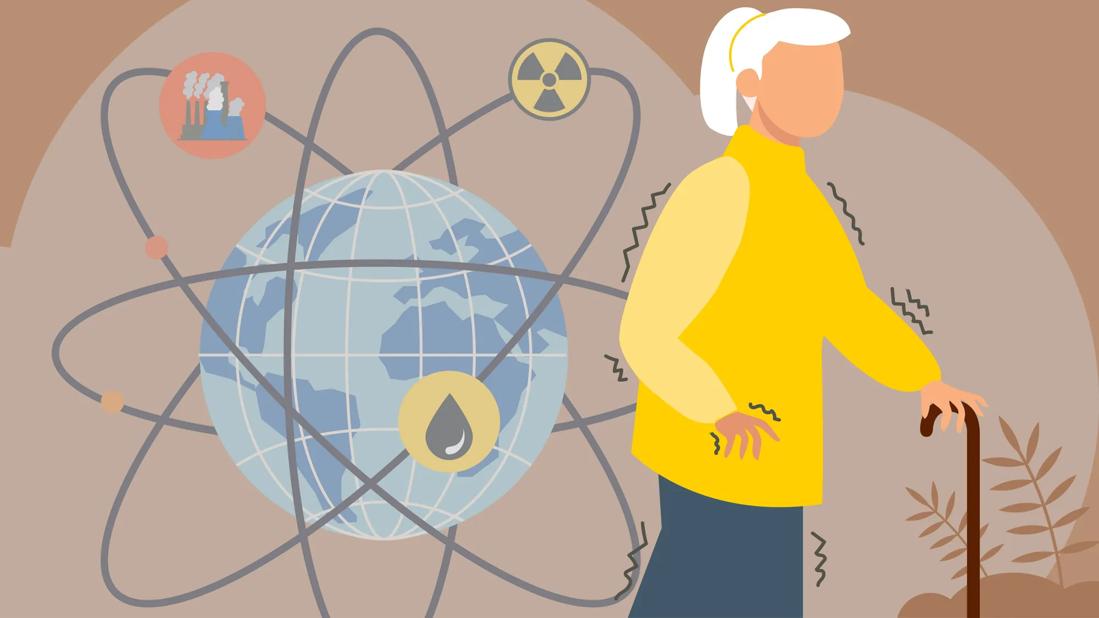Poor air quality, pesticides and chemicals — along with genetic factors — can increase your risk of this brain condition

While there’s no single cause of Parkinson’s disease, the degenerative brain condition may be linked to your genes. But is that the only factor? Are there environmental causes of Parkinson’s disease that you should be avoiding?
Advertisement
Cleveland Clinic is a non-profit academic medical center. Advertising on our site helps support our mission. We do not endorse non-Cleveland Clinic products or services. Policy
“Parkinson’s disease is rarely caused just from genetic or environmental factors,” says researcher Ignacio Fernandez Mata, PhD. “In most cases, the interaction between both factors into your predisposition for Parkinson’s disease.”
Environmental toxins have been strongly linked to Parkinson’s disease, but it’s still hard to prove that they directly cause it. Toxins that play a role include:
These environmental toxins can be risk factors — meaning they can increase your chances of developing Parkinson’s disease.
“Not everybody who is exposed to these toxins gets Parkinson’s disease,” clarifies Dr. Mata. “They don’t cause Parkinson’s disease, but they increase the risk of developing it.”
Advertisement
And it’s important to note that the amount of exposure to these environmental toxins plays a role, too.
“It’s not like you’re exposed to something one day, and then you automatically get Parkinson’s disease — the same way that somebody who smokes a cigarette one day, doesn’t automatically get lung cancer,” he illustrates. “It’s really about chronic exposure.”
And “chronic exposure” can mean different things for different people.
“It’s very hard to put a threshold or a limit on how much exposure you’d need to have, but the more exposure you get — and the more years of exposure you have — then the higher your chances are that you’re going to develop a neurological disorder,” he adds.
Dr. Mata says there’s more research on genetic factors and Parkinson’s disease than on how environmental factors may play a role. So, why is this?
When it comes to genetics, researchers can use a blood sample to look at your DNA. But with environmental factors, it’s harder to measure how much exposure somebody has had over their lifetime.
“We think that Parkinson’s disease might start 20 or 30 years before you see symptoms,” explains Dr. Mata. “So, that means for somebody who’s in their 60s, you would have to figure out what they did in their 30s and 40s to see if that had an impact.”
Healthcare providers may use questionnaires to make some of those environmental connections by looking at people’s history, he notes. They may ask questions about living in a rural area, job history (for example, welders may be exposed to manganese and other heavy metals) and even if you drink well water. The problem? Those questionnaires aren’t always accurate.
And that makes it difficult for researchers to draw any broad conclusions.
“It’s very easy for us to collect information from thousands of people and look at their genetics,” says Dr. Mata. “But extracting environmental information is extremely hard and not always correct.”
While the risk of chronic exposure to many of these toxins is low for most of us, there are still a few things you can do to further decrease your risk:
Advertisement
It can be hard to pinpoint what may lead to a Parkinson’s disease diagnosis — it’s likely due to a combination of factors like your genetics and environmental factors.
“The best thing that we can do is continue to research any connection and try to find out what all these chemicals are and how they may contribute to the disease,” concludes Dr. Mata.
Advertisement
Learn more about our editorial process.
Advertisement

Eat fruits, vegetables, legumes, whole grains, lean proteins and healthy fats to help manage symptoms of this degenerative brain condition

While depression and anxiety are common and can worsen other symptoms, focusing on your emotional health can help

Why seeing a neurologist can save you time and money

Yes, there is a connection between this injury and disease, and not just for athletes who play high-impact sports

Stress, dental work and repetitive motions are just a few of the many HAE triggers

They’re viral cousins, but enteroviruses are more likely to cause serious illness

Be mindful of how many eggs you’re eating, how you prepare them and the other sources of saturated fat in your diet

It can be harder to let go when you’ve invested time, energy and emotions — but it might be the healthier choice long term

Babies can get congested easily, but you can calm their cough by keeping them hydrated, using nasal drops and running a humidifier

Weight loss may cause loose, sagging skin and muscle loss to your rear

Several conditions, like vitiligo and fungal infection, can cause a loss of pigmentation, leading to white spots or patches on your skin